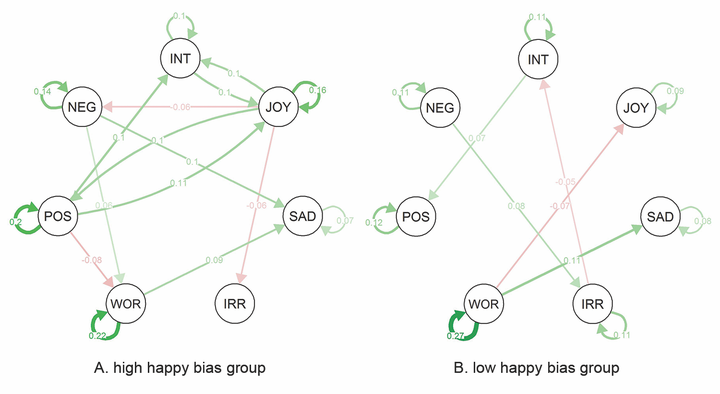Spread the Joy: How High and Low Bias for Happy Facial Emotions Translate into Different Daily Life Affect Dynamics

Abstract
There is evidence that people commonly show a bias toward happy facial emotions during laboratory tasks, that is, they identify other people’s happy facial emotions faster than other people’s negative facial emotions. However, not everybody shows this bias. Individuals with a vulnerability for depression, for example, show a low happy bias compared to healthy controls. The main aim of this study was to acquire a better understanding of laboratory measures of happy bias by studying how these translate to people’s daily life. We investigated whether stable high and low happy bias during a laboratory task were associated with different daily life affect dynamics (i.e., effects from one time interval of 6 hours to the next). We used multilevel vector autoregressive (VAR) modelling to estimate lag 1 affect networks for the high and low happy bias groups and used permutation tests to compare the two groups. Compared to their peers with a low happy bias, individuals with a high happy bias more strongly sustained the effects of daily life reward experiences over time. Individuals with a high happy bias may use their reward experiences more optimally in daily life to build resources that promote well-being and mental health. Low reward responsiveness in daily life may be key to why individuals who show a low happy bias during laboratory tasks are vulnerable for depression.